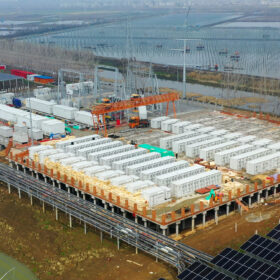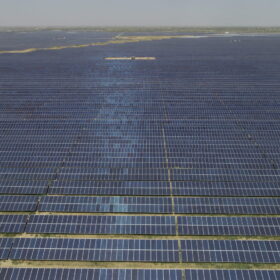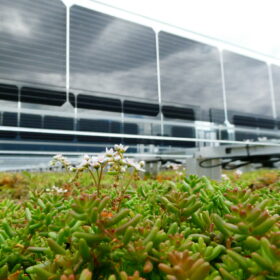Charging quantum batteries
Researchers in Japan have taken advantage of an unintuitive quantum process that disregards the conventional notion of causality to improve the performance of so-called “quantum batteries.” They believe these advances could help to bring the technology a little closer to reality.
MXenes-based organic solar cells offer greater stability, claim scientists
An international research team claims to have achieved greater stability in organic solar cells made with an electron transport layer doped with two-dimensional titanium carbide (Ti3C2Tx) – also known as “2D MXenes.” They used green solvents and an MXenes material known as titanium carbide (Ti3C2Tx).
AMG’s LIVA unit acquires vanadium redox flow battery ops from Voith
LIVA, a subsidiary of AMG Critical Materials, has acquired vanadium redox flow battery (VRFB ) assets from Voith to expand its tech for large-scale energy storage systems.
Chinese company to develop 10 GW of solar in Egypt
A new agreement signed between the Chinese group and Egyptian government officials is part of the country’s Green Corridor Initiative that aims to increase the use of renewable energy. The solar project is expected to save more than $1 billion in annual natural gas costs.
Trina Storage delivers 50 MWh energy storage system to fishery in China
Trina Storage has supplied a 50 MWh storage system to a hybrid fishery-solar-storage project in China. The installation includes 10 2.5 MW/5 MWh battery cabinets and combines sustainable farming with cutting-edge technology.
Cohuna solar plant resumes operations after Energy Safe shutdown
Renewables developer Enel Green Power Australia has confirmed that its 27 MW Cohuna Solar Farm in the Australian state of Victoria has resumed partial operations after being forced to shut down following a grassfire at the site in November.
California rooftop PV companies face high risks, says insurer
Solar Insure tells pv magazine USA that the financial stability of rooftop solar companies in California is now in question. Despite this, a state appeals court recently reaffirmed a number of anti-solar decisions.
PFC Consulting allocates 1.25 GW of solar for $0.030/kWh
NTPC Renewable Energy has secured 900 MW in PFC Consulting’s latest 1.25 GW solar auction. Acme Cleantech won 300 MW and Solarcraft took 50 MW.
Chile approves plan to allocate public land for energy storage projects
A new initiative by the Chilean Ministry of Energy and the Ministry of National Assets is expected to cover storage projects with an aggregate capacity of 13 GWh, distributed mainly in the regions from Arica y Parinacota to Atacama.
European research consortium aims to clear hurdles for BIPV adoption
A group of companies and research institutes are developing tools, technologies, and methods in a four-year project to promote building-integrated PV (BIPV), with the goal of clearing the path for mass deployment.










